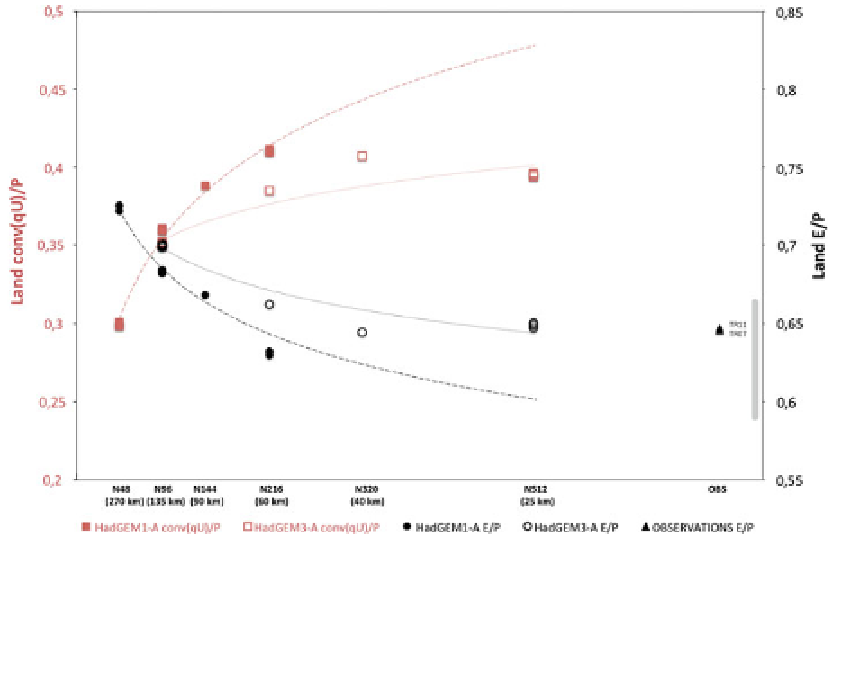Geoscience Reference
In-Depth Information
Fig. 2 Evaporation to precipitation ratio (black dots) and moisture convergence to precipitation ratio
(red squares) over land for each member of HadGEM1-A (solid) and HadGEM3-A (clear) models with various
resolutions. The lines are extrapolated polynomial fits based on N48, N96 and N144 for HadGEM1-A and
N96, N216, N320 and N512 for HadGEM3-A. OBS corresponds to E/P estimates from Trenberth et al.
(
2007
,
2011
). The grey bar includes estimates from previous studies. See Demory et al. (
2012
) for more
details. Figure provided by M-E Demory, May 2012
modelling centres. Many groups are now using very high resolution (*km-scale) simu-
lations, in which convection is represented explicitly without the need for a convective
parametrisation scheme, in order to evaluate and understand the deficiencies in the sim-
ulations which use parametrised convection. Such studies reveal that convection para-
metrisations are often associated with poor representation of the diurnal cycle of
precipitation over land (e.g., Bechtold et al.
2004
; Wang et al.
2007
; Hohenegger et al.
2009
; and see Sect.
2.3.1.2
), over-persistence of light rain and too few dry days (e.g.,
Stephens et al.
2010
; Kendon et al.
2012
) and differences in the sign of simulated soil
moisture-precipitation feedback (e.g., Hohenegger et al.
2009
; and Sect.
2.3.2
).
Variability on longer timescales (e.g., 20-50 day variability associated with the Madden
Julian Oscillation (MJO), monsoon active/break cycles, etc.) is also often poorly repre-
sented in models (e.g., Kim et al.
2009
), both in terms of total variance and also the
direction, speed and extent of propagation. Predicting such variations, and understanding
how they may change in a future climate, is crucially important to many tropical regions,
and is therefore a key area of research among modelling groups. 'Cascade', a UK con-
sortium project funded by the Natural Environment Research Council (NERC), seeks to
better understand the interaction between tropical convection at the cloud-system scale and
larger-scale processes including the MJO. Holloway et al. (
2012
) showed 'Cascade'
simulations of the tropical atmosphere over a very large domain at several different hor-
izontal resolutions and with both parametrised and explicit convection versions for a
10-day MJO case study in April 2009. They found that the explicit convection simulations
had precipitation distributions that were much more similar to observations than the

